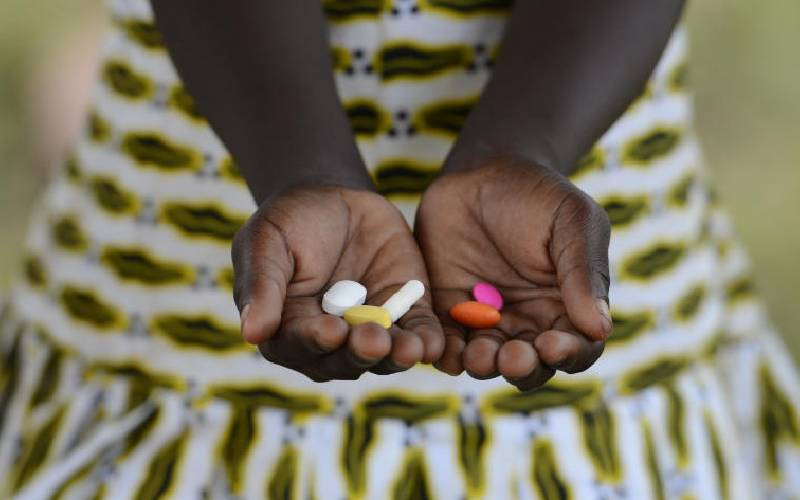
Imagine you are going about your day when suddenly you feel an unbearable pain in the chest. You struggle to breathe and fall to the floor in a heap as people around you watch helplessly. Traumatising, right?
Well, that was the reality in 2023 for about 3.8 per cent of the world population under 60 years and 9.5 per cent of the global population aged over 60 years. All of them were victims of myocardial infarction, commonly referred to as heart attack. In Kenya, over 50 per cent of people suffering from heart attacks die before arrival at the hospital, and for those who do make it to hospital, 21 per cent do not survive.
Heart attacks and other Cardio Vascular Diseases (CVDs) constitute 25 per cent of total hospital admissions in Kenya. Furthermore, 13 per cent of autopsies attribute CVDs as the cause of death in the country. They are the second highest cause of death due to disease after infectious, maternal, and perinatal causes.
It is for this reason that every September 29, the world commemorates World Heart Day (WHD). This year, the campaign runs under the theme, 'Use the Heart for Action'. It seeks to support individuals to take care of their hearts and empower them to urge leaders to take cardiovascular health seriously. So, how can individuals take care of their hearts and what should our leaders do to show they take cardiovascular health seriously?
To answer the first question, it is necessary to appreciate the modifiable and non-modifiable risk factors for CVDs. The latter includes factors that we can do nothing about. According to the Kenya National Guidelines for Cardiovascular Diseases Management, these are age, sex, race or family history.
Some people are predisposed to CVDs on account of these and there is little they can do to remedy the situation. However, this constitutes a very small proportion of the population. Majority are prone to CVDs owing to a mix of modifiable and non-modifiable risk factors at play in their lives. And there is something they can do about the modifiable risk factors. These factors are related to diet, physical inactivity, tobacco use and harmful use of alcohol.
The heart is the engine of the body and it requires quality fuel for the body to run properly. The quality fuels come in the form of foods low in saturated fat, salt and refined sugars and high in polyunsaturated fats, whole grain cereals, fruits and vegetables.
A healthy diet should go hand in hand with adequate physical activity. Individuals should aim to progressively attain at least 30 minutes of moderate physical activity at least five days of a week. This can be in the form of cycling, brisk walking, swimming or jogging. The level of physical activity depends on a person’s physiological status and age. If one has any underlying conditions where physical activity can be harmful, then it is best to involve a healthcare professional before commencing an exercise programme.
- Mending broken hearts: Kenya's fight against cardiovascular disease
- Study to help predict, address heart problems in the elderly
- An urgent call to eliminate Trans Fats and protect heart health in Kenya
Keep Reading
People should avoid alcohol, too. A few years ago, health experts recommended that men should limit alcohol consumption to two drinks per day and women to one. However, evidence emerging in recent times shows that there is no safe level of alcohol consumption.
Dr Carina Ferreira-Borges, a leading adviser with the World Health Organisation on alcohol and illicit drugs, once asserted that the risk to the drinker’s health starts from the “first drop of any alcoholic beverage”. Similarly, tobacco consumption should also be put in check.
The second question is about what our leaders should do to show they take cardiovascular health seriously. The campaign calls on leaders to commit to defeating the world’s biggest killer by developing and/or strengthening national cardiovascular health action plans and by supporting a bold political declaration on non-communicable diseases (NCDs) at the United Nations High-level Meeting on NCDs in 2025.
In 2018, the Health Ministry launched the Kenya National Guidelines for Cardiovascular Diseases Management. It is perhaps the most comprehensive policy document that outlines how individuals can prevent and manage CVDs and how health facilities at different levels of governance can address the problem of CVDs. The guideline was revised and culminated in a second edition that was published in July 2024, with a focus on preventive and promotive health services. Most health facilities, both private and public, are adopting the guidelines and domesticating it to their standard packages of care.
 The Standard Group Plc is a multi-media organization with investments in media platforms spanning newspaper print
operations, television, radio broadcasting, digital and online services. The Standard Group is recognized as a
leading multi-media house in Kenya with a key influence in matters of national and international interest.
The Standard Group Plc is a multi-media organization with investments in media platforms spanning newspaper print
operations, television, radio broadcasting, digital and online services. The Standard Group is recognized as a
leading multi-media house in Kenya with a key influence in matters of national and international interest.











